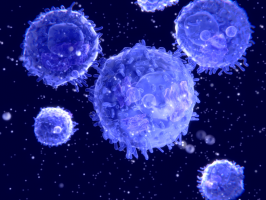
A study conducted at the VIB-KU Leuven Center for Cancer Biology discovered that healthy liver tissue surrounding a tumour activates a defence mechanism that restrains tumour growth.
Remarkably, the researchers found that hyperactivation of this mechanism above levels normally present in the liver, triggered the elimination of different types of liver tumours in mice.
This discovery identifies a novel strategy to fight against liver cancer and could inspire new therapeutic approaches that mobilise normal cells to kill cancer cells.
The results of the study are published in Science.
Current chemotherapies aim at killing rapidly proliferating cancer cells.
However, such therapies are often only temporarily effective because cancer cells quickly evolve drug resistance.
Nowadays, other approaches such as immune therapy do not target tumour cells themselves but activate the natural defence function of the immune system.
The study, led by Prof. Georg Halder (VIB-KU Leuven Center for Cancer Biology), showed that not only the immune system but also non-cancerous liver cells around liver tumours have the capacity to kill nearby tumour cells.
When they experimentally activated this novel mechanism in mice with liver tumours, these mice survived significantly longer and had a drastically reduced tumour burden.
Prof. Halder says: "While the study shows that this anti-tumour mechanism exists, how exactly activated liver cells cause the elimination of cancer cells is not known, but it is obviously a highly significant question that we are currently investigating."
By studying tumour tissues from cancer patients and mouse models for liver cancer, the scientists found that the genes YAP and TAZ were activated around tumours in the liver and that this was the driving force of the anti-tumour mechanism.
This observation was surprising because YAP and TAZ are usually highly expressed in different human cancers where they drive tumour cell proliferation and survival.
"The identification of anti-tumour functions in genes traditionally considered as tumour promoting genes completely changes how we think about cancer genes and their function in normal tissues," says Iván Moya, first author of the paper.
While this study showed that this anti-tumour mechanism can kill tumours and metastases in the liver, it is not yet known whether similar mechanisms can be activated in other organs.
"Given the striking anti-tumour effect of YAP-activated liver cells on liver tumours, our discovery has the potential to provide ground-breaking insights into a novel strategy to fight," says Stephanie Castaldo, co-first-author.
However, while this remarkable finding identifies a completely new strategy to fight cancer in mice, this study is the first molecular characterisation of this novel anti-tumour mechanism which means that more research is needed to investigate how these findings can be applied to benefit cancer patients.
"Indeed, the next step is to test to what degree this mechanism also affects human cancer cells," says Laura Van den Mooter, also co-first-author.
Source: VIB
The World Cancer Declaration recognises that to make major reductions in premature deaths, innovative education and training opportunities for healthcare workers in all disciplines of cancer control need to improve significantly.
ecancer plays a critical part in improving access to education for medical professionals.
Every day we help doctors, nurses, patients and their advocates to further their knowledge and improve the quality of care. Please make a donation to support our ongoing work.
Thank you for your support.